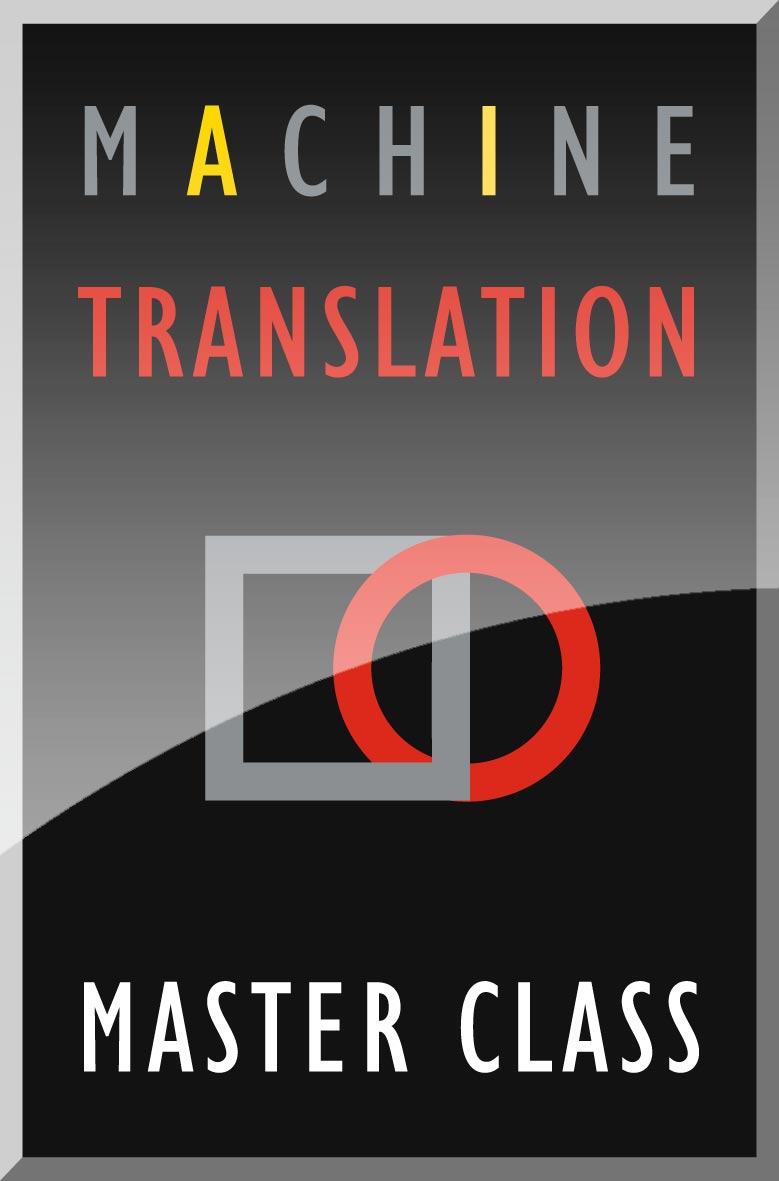Machine Translation Master Course Newsletter – Issue 1

As the Instructor for the new Machine Translation Master Class from The Localization Institute, I’ve been passionate about the relationship between humans and machines for many years. Since 2004 when I completed my PhD thesis entitled Harry Potter and its Chinese Translation using corpus linguistic methodology and translation theories, I have constantly been reflecting on how we can convert our thoughts to machine readable representations and make use of machine power. Machine Translation, in particular, Neural Machine Translation, is definitely a fascinating manifestation of human intelligence in machines. Having said that, I would rather say I am a researcher and practitioner on cultures and humanities in the name of machine learning and artificial intelligence, as I consider such models as neural networks are significant attempts to demonstrate or simulate human intelligence whereas my ultimate goal is to work with you to explore what’s deep in our mind and what our common humanity is. After all, machine is part of human, demonstrating the representable and decipherable part of all of us. On the other hand, all the unexpected aspects that machines are not capable of can be considered risks, which will eventually be taken care of by humans. That’s also the reason why we focus on risk management in this Machine Translation Master Course.
How can I manage the risks related to Machine Translation?
All risk management considerations are built on knowledge and experience. To successfully manage MT-related risks, first and foremost, you have to possess basic knowledge about machine translation so that every decision you are going to make is well balanced between your intuition based on your past experience in the industry and sufficient (not necessarily all) knowledge about machine translation and machine learning. This Machine Translation Master Course covers some of this basic knowledge, for example, some fundamental classifications associated with Machine Translation risk management, including:
- Two basic types of MT-related risks
- Two basic types of MT-related technology
- Two primary purposes of using technology
1. How do I classify the risks related to Machine Translation?
There are two types of risks when we implement machine translation systems: intrinsic and extrinsic ones. In order to control extrinsic risks, you have to possess a good knowledge of what relevant intrinsic factors are. Thus it is important for us to understand the basic inner workings of machine translation as well as its supporting technology. In this Machine Translation Master Course, we mainly focus on the architectural designs of three types of MT systems, namely, rule-based MT, statistical MT and neural MT, as well as relevant CAT tools that are directly useful for various Machine Translation deployment solutions.
2. How do I classify the technology related to Machine Translation?
Fundamentally speaking, there are two types of technology: tool-based technology and intelligent technology. Like why we use bicycles, we use tool-based technological tools to help us improve productivity. Under these circumstances, human intelligence is the key to success. In terms of intelligent technology, on the other hand, humans are more in a position to monitor and correct machine generated results, which in turn supports machine learning and improves artificial intelligence. Does Machine Translation belong to tool-based or intelligent technology? It depends on such factors as how you deploy Machine Translation systems, the relationship between human & machine, and your purpose of using it.
3. Why do we use technology?
Technology can serve both humans and machines. In essence, our ultimate goal is always to have machines serve us better. Yet nowadays we can see more human-machine interaction (HMI) activities have aimed to train machines more than human beings. This poses new opportunities and challenges for us. Do you know that convincing evidence in cognitive science, computer science and learning theories indicates that human brains learn better than any machine… at least for now? So rather than resisting change, it makes more sense for us to empower ourselves to better prepare for the machine-human revolution. After all, it is all up to each one of you!
If you want to know more about machine translation, sign up for our next Machine Translation Master Class.
Disclaimer: Copyright © 2021 The Localization Institute. All rights reserved. This document and translations of it may be copied and furnished to others, and derivative works that comment on or otherwise explain it or assist in its implementation may be prepared, copied, published, and distributed, in whole or in part, without restriction of any kind, provided that the above copyright notice and this section are included on all such copies and derivative works. However, this document itself may not be modified in any way, including by removing the copyright notice or references to The Localization Institute, without the permission of the copyright owners. This document and the information contained herein is provided on an “AS IS” basis and THE LOCALIZATION INSTITUTE DISCLAIMS ALL WARRANTIES, EXPRESS OR IMPLIED, INCLUDING BUT NOT LIMITED TO ANY WARRANTY THAT THE USE OF THE INFORMATION HEREIN WILL NOT INFRINGE ANY OWNERSHIP RIGHTS OR ANY IMPLIED WARRANTIES OF MERCHANTABILITY OR FITNESS FOR A PARTICULAR PURPOSE.




